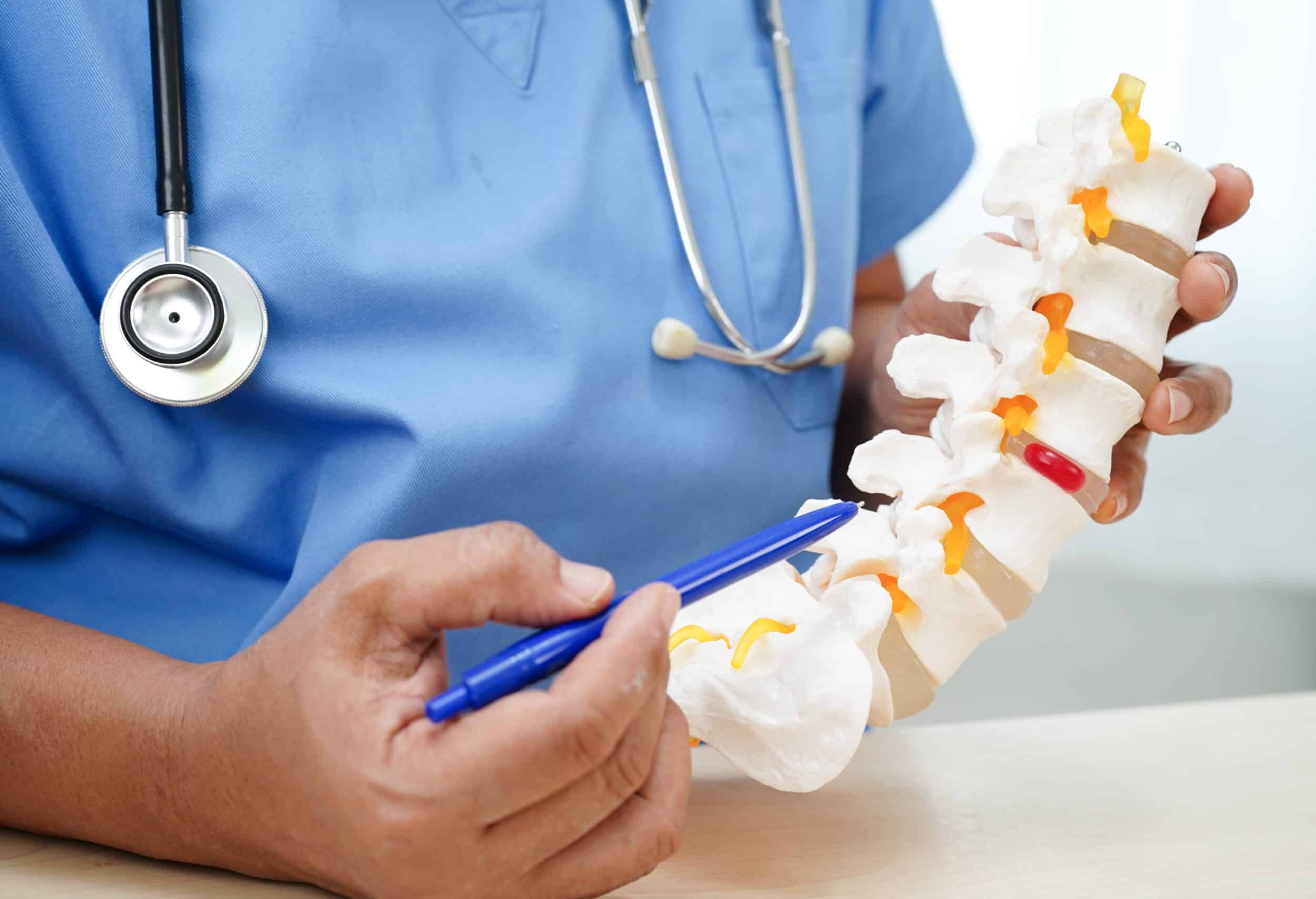Neck and upper back pain can limit daily comfort and mobility, especially when caused by damaged spinal discs or nerve compression. Patients in Portland experiencing these symptoms often seek surgical relief that restores both comfort and function.
At Northwest Spine Surgery, our skilled surgeons, including Dr. Serena Liu and Dr. Kendrick Khoo, perform advanced procedures with precision and patient-centered care. Dr. Liu, a fellowship-trained spine surgeon at the University of Maryland, specializes in minimally invasive and complex cervical procedures to restore alignment and relieve pressure on spinal nerves.

About the Anterior Cervical Discectomy and Fusion Procedure
Anterior cervical discectomy and fusion is a combined surgical procedure performed to decompress spinal nerves and stabilize the cervical spine. This surgery is typically recommended when pain, numbness, or weakness result from pressure on spinal nerves caused by a herniated disc, degenerative changes, or spinal instability.
The operation is performed through a small incision at the front of the neck under general anesthesia, allowing access to the damaged disc without disturbing the spinal cord or surrounding muscles. The cervical spine consists of seven vertebrae that protect the spinal cord and support the skull, making it highly important for both motion and stability. Because of its essential role, any condition that affects this area can lead to significant pain or mobility loss.
By removing the damaged disc and stabilizing the spine with a bone graft, this surgery helps relieve nerve compression and restore spinal alignment. Patients often experience significant pain relief and improved neck function following recovery.
Reasons for an Anterior Cervical Discectomy and Fusion
An anterior cervical discectomy and fusion is considered when there has been severe damage to the upper spine following a fracture or when a congenital abnormality or degenerative disease has weakened the area badly. This may occur due to osteoarthritis or a herniated disc. An anterior cervical discectomy and fusion is usually performed when a patient is experiencing debilitating pain because cervical nerves are being compressed or when there is excessive motion between the vertebrae of the cervical spine.
The Anterior Cervical Discectomy and Fusion Procedure
During the cervical discectomy, a disc that has been herniated or ruptured is surgically removed. The discectomy relieves pressure on the compressed nerve, thereby relieving the pain and other symptoms caused by compression.
During the cervical fusion portion of the surgery, two or more damaged vertebrae are joined through the use of a bone graft so that they will eventually grow together. The bone graft serves as a spacer to prevent the bones from rubbing against each other during the process.
The bone graft is either taken from another part of the patient's body, usually the hip, or is harvested from a donor bank. While a material known as morphogenetic protein may be used to replace a bone graft in other spinal fusion surgeries, it is not used in the anterior cervical procedure since it can sometimes cause swelling and interfere with swallowing.
The fusion increases spinal stability and decreases the pain associated with misaligned cervical movement. Typically, a metal plate and screws are used to increase stability as the bones fuse. This process usually takes from 3 to 6 months. Immediately following the surgical procedure, the patient is fitted with a cervical collar for additional neck support.
Risks of an Anterior Cervical Discectomy and Fusion Procedure
Although this procedure is considered a safe one, there are risks associated with any spinal surgery. These may include: danger of infection, excessive bleeding, blood clots, injury to the spinal cord, nerves or arteries, and the possibility of adverse reactions to anesthesia.
Recovery from a Posterior Cervical Fusion
Typically, after surgery is complete, the patient remains in the hospital overnight; some patients may be permitted to leave the same day, while others may have to remain for a day or two longer. Full recovery usually takes from 4 to 6 weeks, and during this time, the patient's activities are restricted. The patient has to refrain from driving, bending, lifting, pushing, pulling, or reaching. In most cases, sexual activity is also restricted. A physical therapy program is typically recommended to promote a more successful recovery and achieve maximum postsurgical mobility.

Frequently Asked Questions
Most patients wear a cervical collar for several weeks to provide neck support while the vertebrae fuse properly.
Most people resume light activities within 4 to 6 weeks, but full recovery and a return to strenuous activity may take a few months.
Yes. The bone graft gradually integrates with your spine, permanently stabilizing the treated segment.
Some minor stiffness may occur, but most patients maintain a good range of motion once healed.
Discomfort is expected after surgery, but it is manageable with medication and physical therapy guidance. Most patients report significant improvement as healing progresses.
Recurrence in the treated segment is uncommon, but degeneration can occur in nearby discs over time. Regular follow-up care helps monitor spine health.
Yes. Physical therapy, medications, and steroid injections are often attempted first, but fusion is recommended when conservative methods no longer relieve symptoms.
Why Choose Northwest Spine Surgery
At Northwest Spine Surgery, patient success begins with experienced specialists who bring advanced training and precision to every procedure:
- Dr. Serena Liu: Fellowship-trained spine surgeon at the University of Maryland, specializing in minimally invasive and motion-preserving spine procedures.
- Dr. Kendrick Khoo: Fellowship-trained orthopedic spine surgeon at UC Davis, known for using evidence-based techniques to achieve lasting results.
- Comprehensive care: From diagnostics to rehabilitation, our clinic provides continuity of care for improved recovery and outcomes.
- Proven results: Our team uses advanced imaging and surgical planning technology to help reduce complication risk and shorten recovery times.
This expertise helps patients return to their routines with confidence and long-term relief from spinal pain.
Schedule Your Consultation
If you’re ready to explore advanced spine care, contact Northwest Spine Surgery in Portland, OR, at 503-253-4000 to schedule your consultation. Our team will evaluate your symptoms and create a personalized treatment plan that restores your comfort and mobility.
